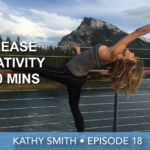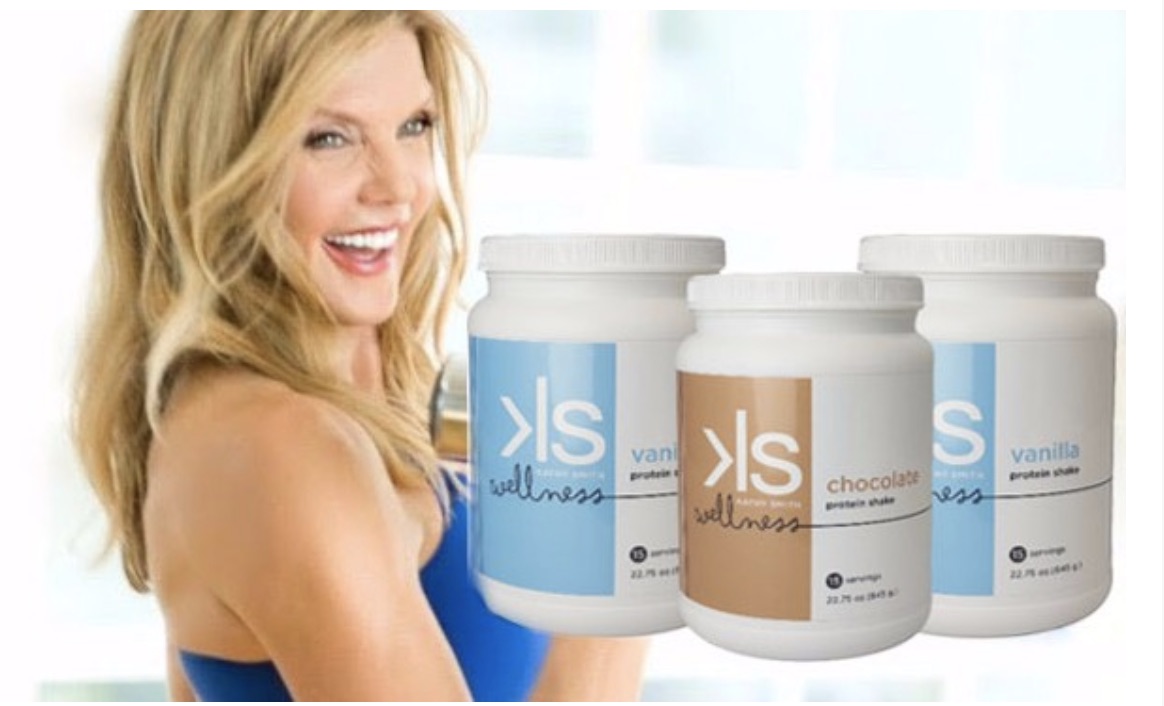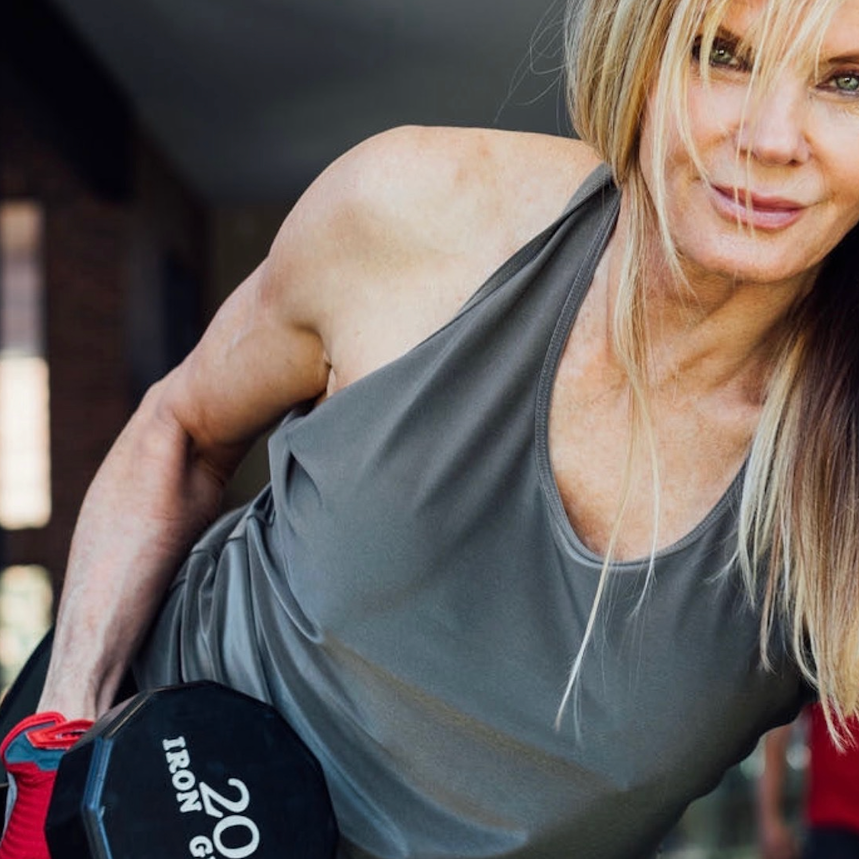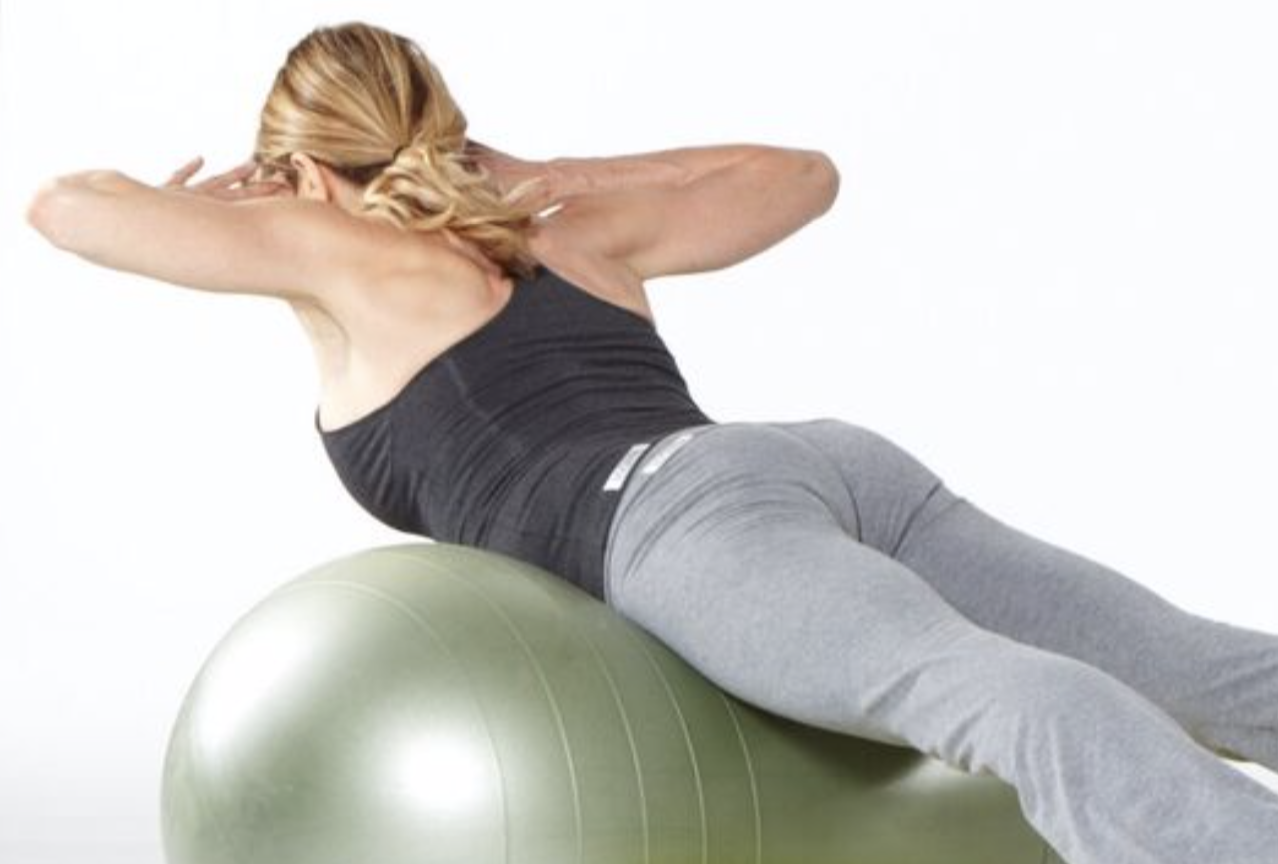Episode 76 | Dr. Melissa Gallagher | Surprising Health Benefits of CBD
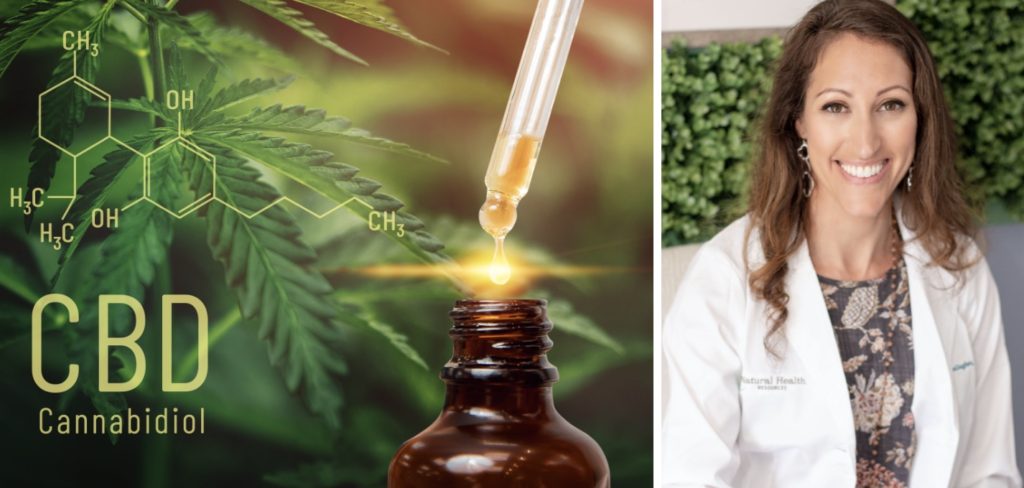
To Listen, Just Click Play!
CBD is popping up nearly everywhere… it’s in oils, lotion, toothpaste, bath bombs, shampoo, and even ice cream. It’s definitely moved from the experimental fringes…. To now it’s mainstream and can be purchased just about anywhere.
Today, let’s dive into how is CBD different than THC, and how hemp is different than marijuana…
Plenty of people are definitely confused about the subject. So here’s a little background… if you look at the cannabis family, you have two parts of the plant… marijuana or hemp. Typically, cannabis has been looked at as a means of getting high. People were more concerned about the recreational use of marijuana for the psychoactive benefit (in other words,the intoxicating effect of the plant) until recently when major headlines were made about the medicinal healing impact of the cannabis plant.
The two main terms we’ll be talking about today are THC and CBD. THC is the part of the marijuana plant that gives you that buzz. CBD is short for cannabidiol, an abundant chemical in the cannabis plant. CBD is promoted as a way to increase focus, reduce inflammation, decrease anxiety and stress…especially in the evening, and improve the quality of your sleep. But unlike THC, CBD is known for having all the medicinal benefits without the high.
Science is inching forward discovering new properties of CBD, but there might be a point where the CBD craze has moved beyond the science. Today’s guest, naturopathic doctor Melissa Gallagher has a youtube channel that delves into the science, the safety, and the benefits of CBD. With her hundreds of thousands of followers, she’s helping to set the record straight on a subject that can be a bit complicated. So get ready for CBD 101 the beginners course.
Subscribe To On Health: The Art of Living
Like What You Heard?
If you like the show, I’d appreciate if you could please take a moment to leave an honest review and rating for the show on iTunes. They’re super helpful for ranking the show so more people can find it. And, I love hearing what you have to say!
And, remember to subscribe on iTunes to receive updates every Wednesday when a new episode is live!
Follow Along With The Transcript
Kathy Smith: Welcome, Melissa.
Melissa Gallagher: Thank you so much, Kathy. I’m so excited to chat with you.
Kathy Smith: Let’s just dive in. I’ve heard so much about you. Our good friend, Jeff, made the introduction. I’m so happy about that. Let’s talk about why did you get so focused and when did you get so focused in your practice on understanding CBDs?
Melissa Gallagher: A lot of it has been driven by my patients, in fact. And also, some of the changes legally. I grew up in the state of Florida and grew up in my practice in Florida, as well, before moving to Atlanta. So there have been a lot of patients I have been working with who have been using both CBD and the THC, and we’ll dig a little bit further into those different ingredients.
What I have found is that some of the market awareness is a big driver for not only professionals like myself in the natural healing world, but also the medical community is having to come to terms with and address that a lot of consumers are consuming CBD products either in their food – like you had mentioned ice cream – and also are consuming oils and vapor. We’re finding CBD in some of the e-vapes. We’re finding it in chocolate products and even topical serums since being introduced in massage facilities. It’s in our skin care now. You can find it at Neiman Marcus and some of the higher department stores where they have wonderful anti-aging properties and anti-inflammatory properties as well.
So part of my awareness really stemmed about ten years ago. I’ll be completely honest with you. I had a few patients that were consuming the medical version of marijuana. One of them was a cancer patient herself and was using the different ingredients or properties that you would find in a cannabis plant to help minimize a very aggressive stage 3 breast cancer diagnosis she had. She was a big driver for my own awareness and understanding. Prior to working with her, I had never even been exposed to CBD or cannabis in a professional or personal manner.
Kathy Smith: Just as you’re talking about a cancer patient, I think it’s good to clarify that a lot of cancer patients are turning to cannabis but not necessarily for a cure for cancer, but to help handle some of the side effects of the treatments. One of the ones that I’ve heard over and over again is you lose your appetite when you’re going through chemo and some of these other treatments. Cannabis is just an amazing way to stimulate that appetite and also minimize inflammation and pain. Is that a little bit what you’re talking about?
Melissa Gallagher: Absolutely. Particularly the non-psycho active aspects of the product that we’re seeing more prevalent now is that there are a lot of individuals using CBD oil for a lot of symptoms that they’re experiencing.
In a cancer case, it would be after radiation treatments or after a session of chemo or radioactive implants. So it does help reduce anxiety. It can be a very good natural sleep aid. It’s also really wonderful for reducing nausea. Those are very common factors after any type of chemical therapy with cancer patients. But also, we see it where individuals with really intense auto-immunity or multiple chronic illness diagnoses. So folks with lupus and RA and Hashimoto’s, they’re now turning to CBD oil to address the pain they’re experiencing, to reduce the inflammation of that auto-immune attack within their body.
And then, we’re also seeing it in cases where folks have had PTSD or even depression and anxiety, it can help calm the neuroendocrine system to help balance the brain and the body and help balance, ultimately, the central nervous system to help calm the other body systems.
Kathy Smith: What about the normal person that might be experiencing a little back pain, maybe problems with sleeping at night, or low-grade anxiety? Are you seeing more and more people without major illnesses but just these minor things that start to creep up even with age? Are you seeing more people experiment with CBD?
Melissa Gallagher: Yes, absolutely. That’s actually the most common question I receive from my patients inside my practice and folks that are consuming a lot of digital, virtual video content on YouTube and some of my other social platforms is, “How can this impact me when I don’t have a major diagnosis, but I do feel like my knees are a little sore. It’s harder for me to get going with my exercise routine.” Or maybe, “I wake up in the middle of the night between one and three a.m.”
So it does have a really significant impact, a positive impact on ultimately the body system that we call the endocannabinoid system. So we actually have a body system that perfectly matches up with the utilization of CBD and the properties of CBD. We not only find CBD itself in a lot of the oil but there’s also other aspects. So we’ll see CBDA, CBDG, CBDC. Those are all elements that we find in the actual hemp plant that are often going to be extracted through the whole process that manufacturers are utilizing to create the oil.
We’re also seeing active terpenes as well. Terpenes are other highly beneficial properties that can have a very positive impact for folks that might be dealing with minor aches and pains, minor sleep imbalances, where maybe they’ve got a little digestive grief here and there. They might be feeling a little run down or anxious, or the muscles are more tense or even if they’re not recovering well after more strenuous fitness activities or workouts. There are definitely big benefits that we can see when individuals consume CBD oil because often– and we can kind of dig a little bit into the different types of oils and products that people consume– but when you are consuming a high-quality CBD product, you not only are just getting the CBD but you’re also going to be getting some other active ingredients. And collectively, those active ingredients target two core receptors that our body system – that endocannabinoid system has – the receptivity. We have the CB1 and a CB2 receptor – or receptors – throughout the body.
Kathy Smith: Melissa, let me just interrupt for a second, because I know, and I’ve done a lot of research on this and listened to a lot of podcasts, but people that are hearing this for the first time, sometimes all of these words being thrown out, get a little confusing. So let’s just come back to this– because I think it’s fascinating– this endocannabinoid system. I think because it was just discovered in– I think I read it– it was recently (the last 20 years).
Melissa Gallagher: In 2004, yes.
Kathy Smith: It’s fascinating, this system. I think it’s worth delving into a little bit more, but let’s just call it the ECS system because I see that. But anyway, the endocannabinoid system. And everybody out there, I practiced that word many times to make sure I got it right. But here’s the thing. Explain it, because it is a fascinating system, and it’s really tied into our nervous system but also our entire cellular system. So can back up and just explain these receptors and the system itself?
Melissa Gallagher: Yes, absolutely. Your endocannabinoid system basically has a significant physiological impact on your body. So it effects pain modulation. It effects your appetite, the anti-inflammatory. It impacts your immune system. There’s actually a multitude of body systems involved. So for instance, your respiratory system, our sensory system, the muscle and skeletal system, even our renal system as well as our lymphatic system. We have our digestive system. Essentially, it impacts every body system. So reproductive, endocrine. We also see the vascular, cardiovascular system and also the nervous system.
Kathy Smith: You’ve mentioned almost every system in our body actually?
Melissa Gallagher: Yes.
Kathy Smith: Okay. Go forward.
Melissa Gallagher: Literally, we have two types of receptors that are located throughout our whole entire human body. Basically, what studies are showing is that CBD acts as a modifier to the two receptors. We call the receptors CB1, and these particular receptors, CB1 receptors, they’re primarily going to be found in our brain and our central nervous system. And to some lesser degree, we’ll find them in other tissues. But primarily, we’re going to see them in our brain and the central nervous system. They will be a huge factor for regulating the brain, our spinal cord, the cerebellum. We’ll see the thalamus, the hypothalamus, the pituitary gland, our thyroid gland, even our liver, our adrenals, our ovaries, the prostate for men, the uterus for women.
So if you think about all of those different organs and glands, the impact there on our hormones, our immune response, just regulating our body’s process and adaptation to the world inside our body and outside, that CB1 receptor is really big. And there are multiple receptors throughout all of those organs and glands.
The CB2 receptors, they’re going to mostly be in what we call the peripheral organs. They’re primarily in essentially cells that are associated with our immune system. So we’ll see our eye, our heart, our stomach, our pancreas, more of the organ tissue, bone matter, the digestive tract. We will see the blood vessels. They will also be part of CB1 and CB2 receptivity.
We can see a lot of our immune response even the lymphatic system. That’s one of my specialties. I’m a lymphedema therapist, and I focus in balancing and promoting lymphatic health across all the different types of diseases and disorders.
Certain immune cells and receptors in our skin, our thymus, our spleen and even the blood lymphocytes, they all have CB2 receptors. So when we draw that back and we think, okay, a cancer patient, there’s a lot of immune stuff going on just internally with fighting the cancer. But externally, if we’re doing chemical therapy via chemotherapy, those organs and glands will also be impacted. So we’ll see impact on the CB1 and CB2 receptors from the cancer, and we’ll also see it externally from a chemical exposure.
We can take this even further to everyday life. We’re walking around in toxic environments. We have water. There are chemicals in our water. It’s back-to-school season, so this is when people’s immune systems get a little bit more bombarded by kids being in close proximity to each other and it kind of kicks off the immune response. Allergy season. We see all of these different factors playing a big role on those receptors and ultimately balancing our whole entire human body.
What we find is that the endocannabinoid system, the receptors CB1 and CB2 have very distinct functions in our health and well-being. And when our body receives some of the benefits or the properties in CBD oil – and THD is also in this category – you will find that we start to see greater balance and a flooding of nourishment to the CB1 receptor and the CB2 receptors.
Unfortunately, Kathy, there is no test for us right now to test what we call your endocannabinoid deficiency. I’ve put together a quiz, and I’ll put this out there to your community if they want to take it.
Kathy Smith: Yeah. And by the way, we’re going to write about it in a newsletter, and we’re also going to put it in our liner notes, so we’ll have mentioned it. But we’re going to have all that in there, because it’s a great quiz. I took it.
Melissa Gallagher: Wonderful. Perfect. You can essentially take a quiz and unfortunately, there’s no testing mechanism right now. I predict there will be in the future. But right now, there are certain symptoms related to imbalances in the CB1 and CB2 receptors. So if there are specific central nervous system-related symptoms, and there might be specific peripheral organ imbalances and immune system imbalances, we can start to identify some commonalities of deficiencies.
One of the interesting things here is hemp. And I was just listening to a podcast the other day, where it was talking about where a lot of the manufacturing in the U.S. is happening is in the state of Kentucky. Kentucky, even before the Civil War began, hemp was a significant cash crop – well more prominent than tobacco. And not only did we use hemp for clothing, but we also used it to feed our animal sources.
So in the old days, a few hundred years ago, folks were consuming animal-based proteins and animal-based products that had exposure and nourishment. These receptors were being nourished by the food source’s food, if you will. We don’t have that anymore. So if you are not a vegetarian and you’re consuming maybe some animal-based protein via chicken or a hamburger or steak, traditionally, if we backtrack 250, 300, 400 years ago, those animals were actually consuming the hemp plant. And as part of their consumption, their bodies, their endocannabinoid system, they were literally having that balance and then, it passed on into the cells and the organ tissue, and we would consume that.
That’s lacking nowadays, and there have been government regulations that has completely eradicated hemp as a food source for our own food sources. That’s another thing that’s underlying, that we don’t really hear a lot of discussion about, and I really think that’s a big factor in terms of why we’re seeing so many folks taking, for instance, a quiz like I’ve put together that are scoring really high on it and saying, “What’s going on? Why am I so imbalanced? How do I balance that?” That’s a big question that I think a lot of people probably listening are asking themselves.
Kathy Smith: Yes. It’s fascinating. I know that for myself, I’m drinking more hemp milk and I put the hemp pellets and granules on my cereals and my shakes and stuff. But I’m now doing more and more with hemp – even cooking with it.
But backing up, there are two directions I want to go. Let me start with this one, first of all. I find it fascinating this idea of you have the cannabis category. Underneath this, you have the marijuana plant and you have the hemp plant. Why don’t you delve into the differences between the two?
And also, I think everybody, there’s still that concern – the legality of each of these – statewide and nationwide.
Melissa Gallagher: Yes. This is where we have a lot of changes that have happened and we’re even seeing now the FDA is having hearings and even our elected officials in the federal government are having discussions, because we’re seeing so much of these products in our food sources. Essentially, you can go to 7-Eleven and you can get CBD oil.
So hemp versus marijuana. This is a really, really big question. Hemp and marijuana both are from what we call the cannabis sativa family. There are certain shared similarities, but the biological structure of the plant, they’re very distinct and some critical differences.
For instance, the product we receive from the hemp plant itself is CBD oil. That’s with the active properties of CBD. We often will hear or see or read labeling that says, “full spectrum”. Sometimes, we’ll also see where they might call it, “broad spectrum” or “full-plant extract”. That’s the CBD oil category. The CBD is part of the same plant. So the CBD will be extracted from the leaves closest to the bud. So we’ll see certain parts of the plant deliver the CBD oil, like the leaves.
The hemp oil comes from the hemp plant. But it does not include the leaves. So hemp oil that we see, as you had referenced – hemp milk and hemp oil that we can use in cooking and add to salad dressings – there are zero active properties. We’d be hard-pressed to find any CBD oil in a hemp oil. CBD oil is what we’ll– legally– we say it’s okay legally if it contains 0.3% or less of the psychoactive property called THC.
Kathy Smith: How much was that again?
Melissa Gallagher: It’s 0.3% or less.
Kathy Smith: Okay.
Melissa Gallagher: So 0.3% or less is the legal allowance of THC in any over-the-counter CBD oil product. Now, that is something that there’s a lot of debate. There’s just a significant amount of discussion in the CBD world. There are rogue kind of wild west manufacturers that have zero testing. They’re importing CBD oil. There’s really no sort of from A to Z the processing, the growing of it, the soil. There are certain brands that are just trying to get into the market, and there is zero regulation.
Kathy Smith: It’s crazy. I know. It is the wild, wild west. And by the time we’re done with the show, this is what I really want to give recommendations to our listeners of where they should be turn maybe. But you’re right. I’ve been exploring this for a long, long time, and I’m still really confused when I go into the grocery stores. But anyway, keep going. I love what you’re talking about.
Melissa Gallagher: It’s totally confusing, and to be totally honest with you, there are so many new products hitting the market, it’s even hard as provider/practitioner who’s in this world – I call it CBD therapy – of understanding, okay, what’s this new company? Let’s talk about the processing. The good news is that there are some really reputable brands that really care about the product, the purity, and that are looking to deliver quality. And quality manufacturers will always have third-party testing, so there is a non-associated third party that the labs are just running CBD oil and assessing any THC properties or anything else.
They’ll test the terpenes. Brands that are really reputable will list, “We have the phytol.” And that’s a terpene. Phytol is 3% of this product. So they [inaudible 00:27:38] the types of terpenes and the reputable brands, the quality brands will have [inaudible 00:27:47] THC in them. Because often, THC is showing up in CBD oil products [inaudible 00:27:55] contaminant. It’s not really from the leaves. We’re seeing in the manufacturing process is a little haphazard and that they’re pulling leaves or external parts of the bud or the flower. The flower’s where we see the THC. [inaudible 00:28:17] so the higher [inaudible 00:28:20] can grow 19 or 20 feet and the leaves, the [inaudible 00:28:27] CBD contain leaves will be at the highest point, and in the middle, there will be a bud. Just like with the marijuana plant.
Then there are brands like some of the brands that I use, they were manufacturing years before – not a significant amount of years – but two or three years before the farm bill came around. And they haven’t changed their labeling. They’ll still label pre-farm bill where it will say hemp oil, but it really is CBD. So a lot of the hemp-CBD oil products require some investigative work as a consumer. We have to read the label. We have to turn it over and we have to look at the ingredient facts. We have to look at the quantity, the milligram dosage of the bottle, and also the serving size. And then, even dig into the online websites of the brands. The quality brands will list very proudly their third-party lab testing to showcase they have quality product, there’s zero THC or if there is, they will list the point whatever percentage. It’s obviously going to be 0.3% or less. And they will be very descript.
On the other side, the marijuana plant, the primary product there is THC oil. The marijuana plant – the way that cannabis sativa strain – biologically, the flower itself is what it’s grown for, and those flowers have the highest THC content. And the growth process is very much monitored. It’s often isolated. They are very particular about not cross-pollenating because it could have contaminants with the THC content. They are shorter plants.
So hemp plants grow way taller than the marijuana plant. And the marijuana plants will be a little bit bushier. They’ll have more leaves and buds around the plant’s body. So the hemp plant will be like a long stalk, a long stem and then it’s got more of the leaves at the 15 or 16 feet mark and higher.
Kathy Smith: Again, for people that haven’t tried it, I will say that when I was in college and my first time trying marijuana, it was interesting. I did it with my girlfriend. I walked into a Dunkin’ Donuts store and I looked at all these donuts, and of course, I got the munchies and it looked amazing. But at the same time, I looked at the sales girl and I thought to myself, “Oh, my gosh. She knows. She’s going to call the police now. She’s going to call the police,” and my mind goes, “But the donuts look so great, but she’s going to call the police.”
There’s something that people talk about, this THC for a lot of people, can cause is paranoia. I honestly did not like the feeling and then it made me very, very tired afterwards. But what I liked about when I’ve been dabbling with CBD oils that it feels like – and I’ve heard it described like this before – it feels like taking a warm bath. The tension melts away kind of like if you were soaking in a bath. And I do enjoy it. But I have more questions from my standpoint from things like dosage.
Let’s just switch over to dosage, because I think that is a part of it. Like, how much is too much? How much is too little? And I have heard that you can get some liver toxicity if you go overboard with CBDs. But why don’t we talk about doses and people who are maybe just starting out. Where should they start?
Melissa Gallagher: Sure. That’s an excellent question. Everybody’s body and reaction to any type of ingredient that they might consume– this is for food and also what I call herbal therapy. This is an herbal therapy category.
You want to start slow. I have yet in my practice come across anybody who’s had an allergic reaction. But that doesn’t mean that there aren’t people that might be allergic to the hemp plant. So that’s one thing to note.
The best way to approach it is slow and steady. Just kind of experiment with your dosing. But generally, this is where things get really mucky and gray. The bottles themselves often will have a milligram dosage labeling. So often, you’ll find on the market 500, 1,000, or 1,500 milligrams. Generally, the way that is labeled, that’s the bottle size. So that might be 15 or 30 servings that give you a total of 1,500 milligrams.
This is really tricky, because I will have people who will– I’ve put out a lot of video content about CBD– and people will comment and will say, “I have a 750-milligram bottle, and I don’t feel it.” Well, if you have 30 doses and 750 milligrams, you divide that 750 by 30 and it really works out to be a very small milligram dosage. So generally, folks are consuming anywhere from one to three milligrams all the way up to about 10 or 15 on average with some of the smaller bottle milligram doses.
That’s, honestly, Kathy, where we see the impact. It can be very minor. For some folks, they actually might need more milligrams dosage, so the milligram dosage per serving size might need to be greater.
I know about your comment about the liver toxicity. There was one small study done recently in the U.S, so this is kind of the gray area that we fall in because CBD is not recognized legally with our federal government. We’re not able to do as much testing. So the CDC and the FDA, there’s no regulation right now over any aspects – the manufacturing, the quality control, testing, but also, clinical trials.
So we have a gap right now where there are a lot of consumers consuming these products. But we don’t have substantial medical clinical data. We have more in the mice population, but humans are not mice. So there’s not always a correlation in terms of the impact with a mouse versus a human body.
But I often reference a lot of the European medical journals. We see more utilization of CBD in Japan. We’re seeing it in Europe and Asia. So we’re getting a lot more data from there than we are from the U.S.
For instance, there is discussion in the liver toxicity world that individuals were on other medications that might have been more prone to some liver toxicity anyway. Then, when the CBD was introduced, it was at maybe 10x or maybe 15x the average dosing. So they would be consuming 1,500 – like the whole bottle – three or four times a day for a period of weeks. That’s not really very realistic. Most people aren’t consuming that much.
But I do have one of the brands that I really love. They have a 3,000-milligram bottle dose. An individual serving size will give us 100 milligrams. And that is something where some of my patients, I have them taking 100 milligrams three or four times a day if they’re in a flare. Or they might be taking 100 milligrams an hour before bed, and it helps give them, as you described, that really relaxed in a bubble bath state.
So there’s a lot of gray, and what I find is we have to be very specific and individualized to the dosing for folks. There are individuals that might need the adaptogenic power of CBD oil and adaptogenic meaning it helps to balance the body’s stress response – both mental and physical – and can help lower cortisol levels.
So we do have that science. We do know that the CBD oil can benefit certain body systems as we’ve talked a little bit about the endocannabinoid system. But we don’t have specifics on the dosing. Part of that is because we have a lack of regulation. Part of it is you could test, clinically, 10 different products and out of 10 of those products, they each have different ingredients and properties. So there’s no standardization right now on the market for us to get really substantial clinical data, if that makes sense.
Kathy Smith: Yeah, it does. I’m right with you when you talk about starting slowly. I started with 10 milligrams, because I had read about the absorption of CBD also. So I combine it– and I don’t know what you think about this– with turmeric and some coconut oil, then I used that. I was told that that helps the absorption process. What do you think about that?
Melissa Gallagher: I love, now, that we’re seeing brands starting to blend. I don’t know if you’re doing that yourself or if it’s the product that you’re consuming has all of those in it. I have some brands that will have 100 milligrams of CBD oil plus they’ll have 500 milligrams of turmeric. They’ll have 10 milligrams of black pepper to enhance the turmeric absorption. I have not seen any specific clinical data about pairing CBD oil specifically with the turmeric. But I love turmeric alone and in combination with CBD oil. I think it gives such a great anti-inflammatory benefit to the body.
Kathy Smith: Which is what I’m looking for especially with exercise. I’m really experimenting around with this – with the anti-inflammatory impact on the body as it relates to exercise. Because as you know, as we get older – younger and older – but if you’re pushing your body and it’s creating inflammation, I’ve been reading more and more about the benefits of, as you mentioned, turmeric, but also of CBD as it relates to that anti-inflammatory properties. Are you working with many people on that in your practice?
Melissa Gallagher: I am. Absolutely. That’s a core facet. As a naturopath, we believe that so much of the illness and disease people are dealing with is rooted in an inflammatory state. So systemic inflammation is a big factor in our cellular aging process. It speeds that up. It doesn’t give us the right lubrication with our joints and our ligaments and our soft tissue that’s going to support repair and recovering.
So yes, I think we’re all walking around in different degrees of inflamed states. It’s part of the human experience as we go about our day. But how do we balance that out and lower that? That’s where, at night, we get very restorative rejuvenative impact just naturally with our body. The sleep cycle and the way we sleep, getting into REM and relaxation, certain organs are able to have a little hiatus and not be overworked. That’s all a rejuvenative state.
So if we can pair that up with CBD oil and other powerful anti-inflammatory herbs and properties to help recover, repair, and support the body, then we’ll see a greater impact in how somebody feels when they wake up or are functioning the following day.
Kathy Smith: I always say, “Win the morning, win the day.” Then, I say, “Your morning starts with the evening before.” So if you’ve had a good night’s sleep, you get up and you’re ready for your day. So I love that. This is something that supports getting a good night’s sleep, which so many people have a hard time with.
I could talk to you forever. I’m so impressed with the way that you can take this material and explain it in terms that everybody can understand.
For listeners, I encourage you to perhaps even relisten to the podcast, because as I said, you can go through these terms, and until it becomes second nature to understanding them, it can be a little confusing.
Melissa, why don’t you tell us about where we can find the quiz and tell the audience where we can find you, your YouTube channel and the quiz and we’ll also put it in the liner notes. I’d love everybody to be able to find you.
Melissa Gallagher: Sure. Absolutely. My website and my business name is Natural Health Resources – so NaturalHealthResources.com. And the website, we do have, on the front page, links to CBD. You can download the quiz right from the front page. And we have a specific CBD page as well, where we’ve got additional handouts. It’s really informative, informational downloads that give you more information about the endocannabinoid and body systems, the breakdown of those systems, the information about terpenes to look for in oils.
My YouTube channel’s the same name – Natural Health Resources. I put out video content every Monday and Friday. We have almost 400 videos, so it’s just a clearinghouse of all different videos focused on natural health in their orientation, answering a lot of questions people have. Maybe they’re dealing with inflammation in their diet. Maybe there are men dealing with prostate or erectile dysfunction, hormone imbalances, veins, swelling in your legs, any of those kinds of general topics that people are searching for. We have a lot of playlists people can watch and kind of binge watch content.
I also host live shows. I have a live Instagram show every Thursday at three p.m. eastern time and then, also on Facebook every other Friday.
Kathy Smith: Wow. You’re doing a real service, because this is a topic that is just exploding right now. We’re finding out more and more every week about the benefits of CBD, so getting the benefits of CBD without having to go through getting the high from the THC. I’m not sure if it’s going to become the next vitamin C type of thing where it’s something that we use. As you said, just use it to prevent inflammation and almost as an anti-aging pill.
We’ll be talking more about it. I’m still in the experimental stage myself. I’ve been watching your YouTube channel because it’s fascinating. And I think, to your point, you can binge watch. But the other thing is you can just pick up here and there something new every week. And that’s what I love about it.
Thank you so much for being on the show. You’re wonderful, and I look forward to talking to you again and bringing you back.
Melissa Gallagher: Thank you so much, Kathy. I’m so grateful.
Kathy Smith: Okay. Talk soon. Bye-bye now.
Melissa Gallagher: Thank you.




